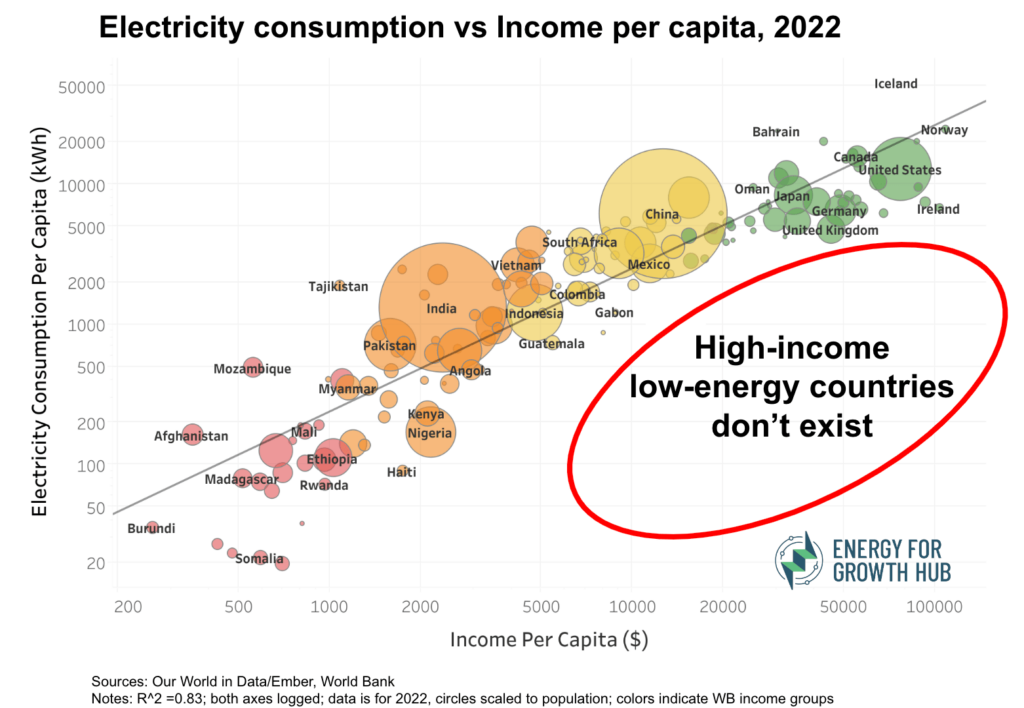
The Metric
The next step in the fight against energy poverty
What is the Modern Energy Minimum?
Access is the first step… Energy for growth is next.
The current access standard is 50-100 kWh of electricity per person per year — all consumed at home. This is enough for basic needs like lighting and phone charging, but cannot enable job creation and higher incomes.
The Modern Energy Minimum (MEM) complements SDG7 by raising the bar for household consumption and covering electricity used outside the home. The MEM specifically tracks the number of people who:
 Meet the International Energy Agency’s extended bundle and the World Bank’s Multi-Tier Framework Tier 4 standard of 250 kWh at home, and
Meet the International Energy Agency’s extended bundle and the World Bank’s Multi-Tier Framework Tier 4 standard of 250 kWh at home, and
 Live in a country where non-residential electricity use averages at least 750 kWh per capita.
Live in a country where non-residential electricity use averages at least 750 kWh per capita.
Why 1,000 kWh?
Energy is like income.
We know the fight against global poverty isn’t over once people exceed the extreme poverty line of $2.15 per day. We also track higher thresholds like $3.85, $6.85, and even $25 per day. A tiered approach reflects how people progress up the income ladder — or where they might get stuck.
Energy poverty needs the same tiered approach. The MEM represents the next step on the energy ladder, recognizing energy needs grow as economies develop. The MEM’s 1,000 kWh correlates with $6.85 per day.

A Decade in the Making
The MEM is the result of a 10-year effort by two expert working groups focused on refining how we define, measure, and track energy progress globally.
The MEM closely aligns with broader development goals, like eradicating poverty (SDG1) and creating jobs (SDG8). It complements existing metrics like the electricity access rate, rather than replacing them, offering a more comprehensive view of energy poverty.

